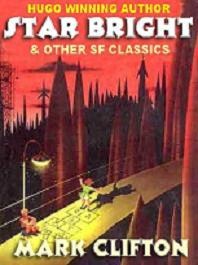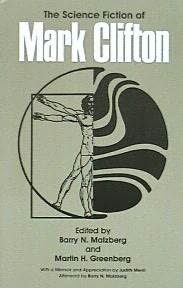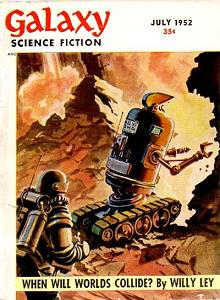
 Mark Clifton (1906-1963) saw published but twenty-odd stories and three novels in his brief career, which lasted but ten years from 1952-1962. With co-author Frank Riley, Clifton wrote They’d Rather Be Right (a.k.a. The Forever Machine), which won the Hugo Award for Best Novel of 1955. Controversy still lingers over the book, some calling it the most neglected novel ever to win a Hugo Award, while others declaim it as being the worst. Clifton’s true gift, however, resided in the power of his short work.
Mark Clifton (1906-1963) saw published but twenty-odd stories and three novels in his brief career, which lasted but ten years from 1952-1962. With co-author Frank Riley, Clifton wrote They’d Rather Be Right (a.k.a. The Forever Machine), which won the Hugo Award for Best Novel of 1955. Controversy still lingers over the book, some calling it the most neglected novel ever to win a Hugo Award, while others declaim it as being the worst. Clifton’s true gift, however, resided in the power of his short work.
Mark Clifton was a practicing industrial psychologist for a quarter century. During that time he interviewed 200,000 potential employees. Much of what he learned about human nature is reflected in his stories, many of which, while bringing an insight and maturity to the themes he addressed, were of a cynical disposition. That said, and cynical or not regarding human nature, he often wrote brilliantly. Barry Malzberg writes in his Afterword to The Science Fiction of Mark Clifton (Southern Illinois University Press, 1980), a collection of a dozen of Clifton’s best short stories, “He changed the field irrevocably, proving to be one of the twelve most influential writers of science fiction during its fifty-four-year commercial publishing history.”
 “Star, Bright” is decidedly not one of Clifton’s darker stories, involving as it does a gifted and lovable young child. It saw print in the July 1952 issue of Galaxy, and is one of his most popular stories (and his second to see print). It tells the remarkable story of a three-year-old girl who exhibits the most profound abilities, and her father’s gentle attempts to deal with his daughter’s special brand of genius. Suffice it to say that this utterly charming, well-mannered toddler in “Star, Bright” is quite endearing and reader sympathetic, and Clifton uses her child-like innocence to explore possible rationales for telepathy, time travel, and parallel dimensions. She coins the terms “Brights,” “Tweens,” and “Stupids,” to classify the intelligence level of her family and friends, with no untoward judgment implied in her innocent, but matter of fact appraisals. She, of course, is a “Bright.” Listening to this radio adaptation you might discover where you fall.
“Star, Bright” is decidedly not one of Clifton’s darker stories, involving as it does a gifted and lovable young child. It saw print in the July 1952 issue of Galaxy, and is one of his most popular stories (and his second to see print). It tells the remarkable story of a three-year-old girl who exhibits the most profound abilities, and her father’s gentle attempts to deal with his daughter’s special brand of genius. Suffice it to say that this utterly charming, well-mannered toddler in “Star, Bright” is quite endearing and reader sympathetic, and Clifton uses her child-like innocence to explore possible rationales for telepathy, time travel, and parallel dimensions. She coins the terms “Brights,” “Tweens,” and “Stupids,” to classify the intelligence level of her family and friends, with no untoward judgment implied in her innocent, but matter of fact appraisals. She, of course, is a “Bright.” Listening to this radio adaptation you might discover where you fall.
“Star, Bright” aired on X Minus One on April 10, 1956. X Minus One is regarded as the premiere Old Time Radio SF program. It ran from April 24, 1955 to January 9, 1958 and showcased 126 episodes, of which “Star, Bright” was episode 47. If you enjoy “sense of wonder” stories you’ll find this one irresistible, for the wonder is shown to us through the eyes of a child. Kudos to Clifton.
Play Time: 28:04